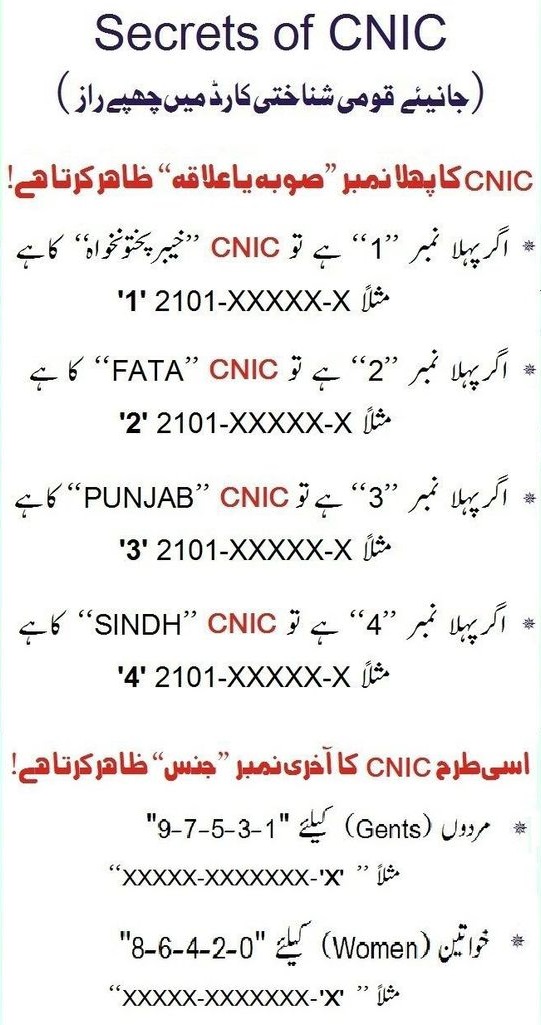KARACHI: The computerised national identity card (CNIC) issued by the National Database and Registration Authority (Nadra) verifies a person’s Pakistani citizenship, however, there is a secret behind every digit of its 13-digit number.
This 13-digit number is entirely different for every Pakistani.
This number comprises three parts. The first part, which comprises five digits i.e. ‘12101’, has its first digit ‘1’ identifying your province. People whose CNIC number starts with 1, are residents of Khyber Pakhtunkhwa province, similarly, 2 represents FATA, 3 for Punjab, 4 for Sindh, 5 represents Balochistan, 6 for Islamabad and 7 represents Gilgit-Baltistan province.
The second digit in the CNIC number shows your division, which means every a digit identifies a different division in a province, while the rest of the three digit represent your district, tehsil and union council.
The second and middle part of the CNIC number, which comprises of seven digits separated by hyphens i.e. XXXXX-1234567-X, is basically a code for the family number of a citizen. This code forms the family tree of a citizen.
The third part, which has only one digit following a hyphen, represents sex of a person. For a man, odd digits i.e. 1, 3, 5, 7, 9 are used, while even digits i.e. 2, 4, 6, 8 are used for women.
This is how a CNIC number is generated by the Nadra’s automated system.
